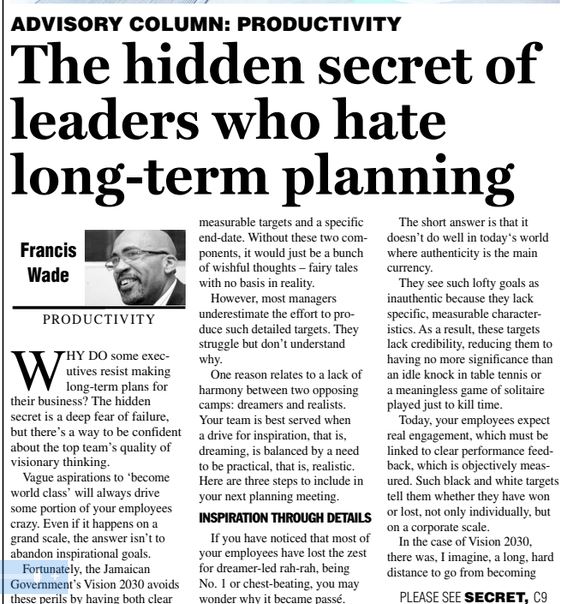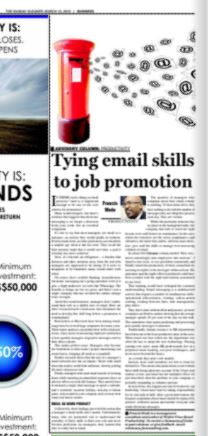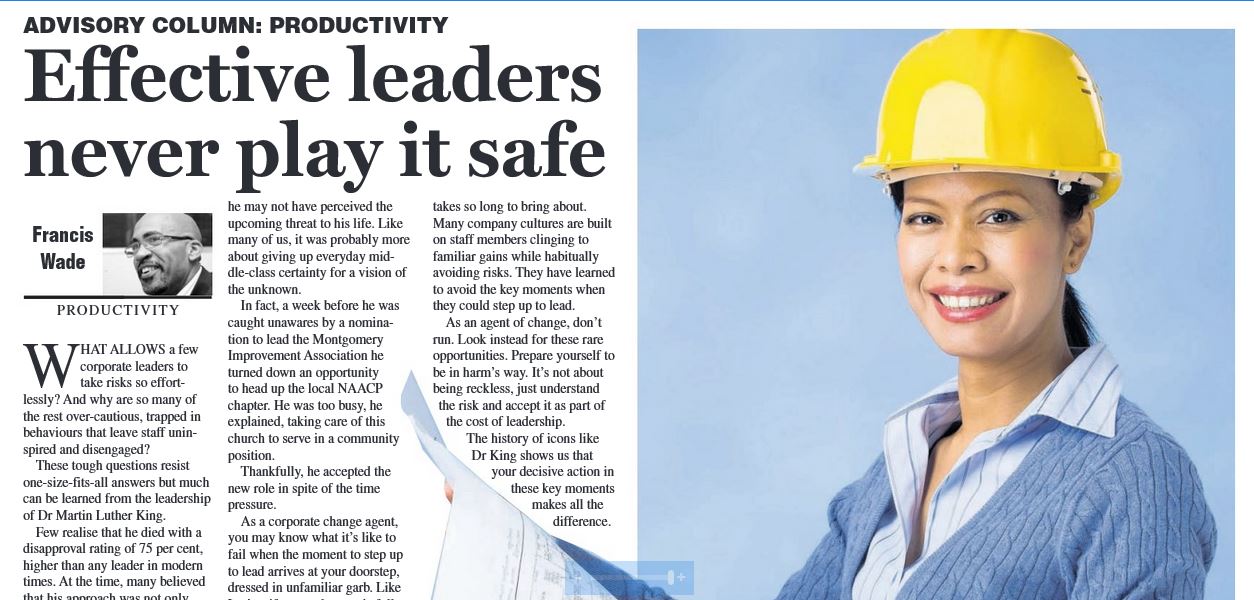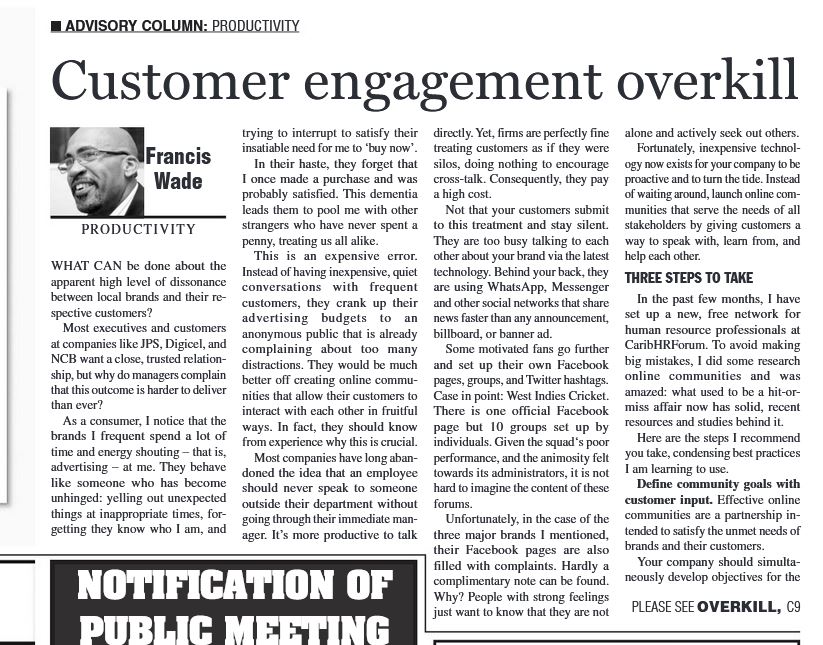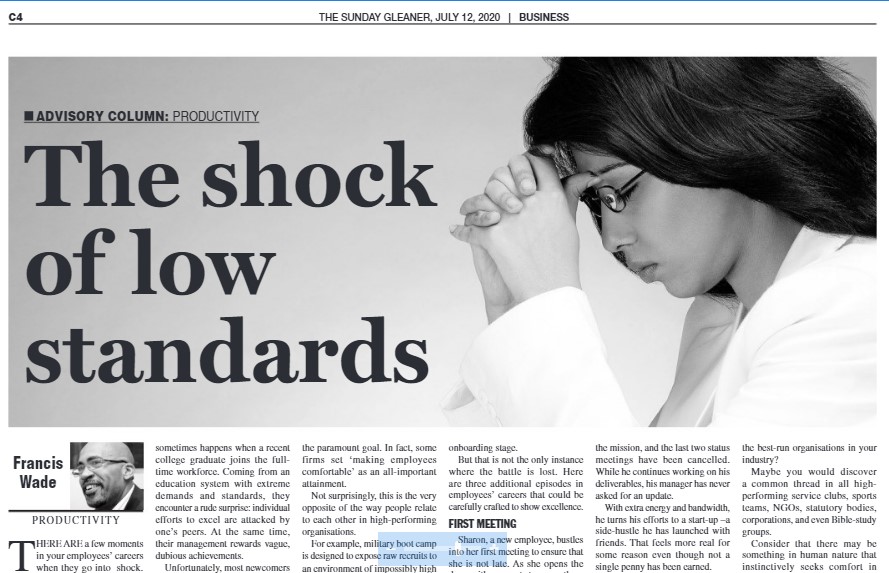If you manage an extremely high number of tasks, it’s a mistake to accept productivity advice from just about anyone. Instead, you should use special solutions tailored for people like you.
CEO‘s I have worked with share a few distinct characteristics. They tend to be:-
High energy – Sometimes, they get a lot done by simply working harder than others.
Driven – They don‘t need to be inspired by outsiders: They motivate themselves even under trying circumstances.
Creative – They routinely come up with novel solutions from disparate sources.
While this list may appear to be little more than a bunch of “good things”, these characteristics create a unique personality: an “Ultra-Busy“. She is someone who regularly places more tasks on her plate than she has the capacity to complete. In other words, she sets lofty aspirations which she sometimes can‘t meet.She is also prone to live an unbalanced life. High blood pressure, overweight and lack of time with loved ones are common problems for her and others in this cohort.
Finally, she fails to account for her uniqueness. Believing that others are just like her, she mistakenly trusts them to deliver at the same level.
Perhaps you recognize these traits in yourself. While they may sound like profound weaknesses, they actually come from a positive place. You see, Ultra-Busys aren’t simply workaholics. Instead, they love tackling big problems, both for the inherent challenge and for the underlying mission. They aren’t happy unless they use their brains, hearts, minds and souls for a worthy purpose. As such, they give everything they can, often losing track of time as they tackle and resolve one issue after another. These totally immersive moments are high points.
As such, their time is precious, making them fastidious in their choice of productivity habits and aids. Always on the lookout for the latest improvements they need to heed a word of caution: much of the advice floating around isn‘t actually meant for them. Here’s why.
During adolescence, each one of us starts to teach ourselves how to use our memory to manage our personal task-load. Then, as we grow older, we search for better methods to handle more tasks.
A few people – The Ultra-Busys – take this to an extreme. Their love of big results requires them to manage a monumental task-load. Unlike others who see added tasks as a burden, they willingly create lots of them in order to make quicker progress towards their life-goals.However, most productivity advice doesn‘t account for this difference. Instead, it‘s geared for the average person who simply wants to survive each day using a few handy coping mechanisms.
But if you happen to be an Ultra-Busy, what methods should you use? My research reveals the following.
1. Use a Time-Scarcity Schedule
Most people adopt a calendar exclusively to track appointments, but this technique doesn‘t work for Ultra-Busys. Instead, you must use your calendar to plan all your hours, including sleep, weekends and holidays. In this way, it helps you confront the reality of a 24-hour day, especially when you reach the end of an activity and need to choose which one to do next.Other folks don‘t experience your level of scarcity and have lots of spare time. You don’t, and a time-budget is your key to keeping yourself on track in every dimension of your life.
2. Use Flexible Tools to Combat Disruptions
As an Ultra-Busy, you deal with unexpected, daily disruptions. This means that you must use advanced task management software in place of either memory or paper tools.It’s your answer to the problem of not having an administrative assistant who can re-juggle your schedule when the unplanned occurs. Instead, you are required to do everything on your own and the best choice of task manager is one that‘s cloud-based, using the latest Artificial Intelligence.
3. Embrace Your Agency
If you‘re a real Ultra-Busy, you probably exhaust others around you with your pace and intensity. Some will pity you, thinking that you are a sorry case…a victim of your own success.However, deep down you know that nothing could be further from the truth. You accept and appreciate your own agency – each task you undertake is one you created freely, from far inside your commitments.
So don‘t be alarmed when others fail to understand. Instead, find the few who are like you and learn from them. You can take the free training I offer to Ultra-Busys at ScheduleU.org – The School for Scheduling Everything.
Your job is to stay true to your calling and its consequence: the incredible time demands you put on yourself. Avoid average advice and uncover the thinking that fits your extraordinary commitments.
http://jamaica-gleaner.com/article/business/20190407/francis-wade-time-schedules-super-busy-manager


